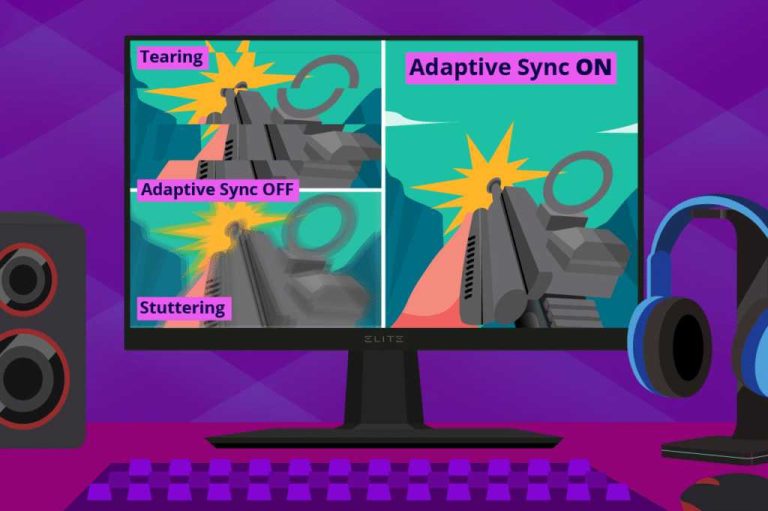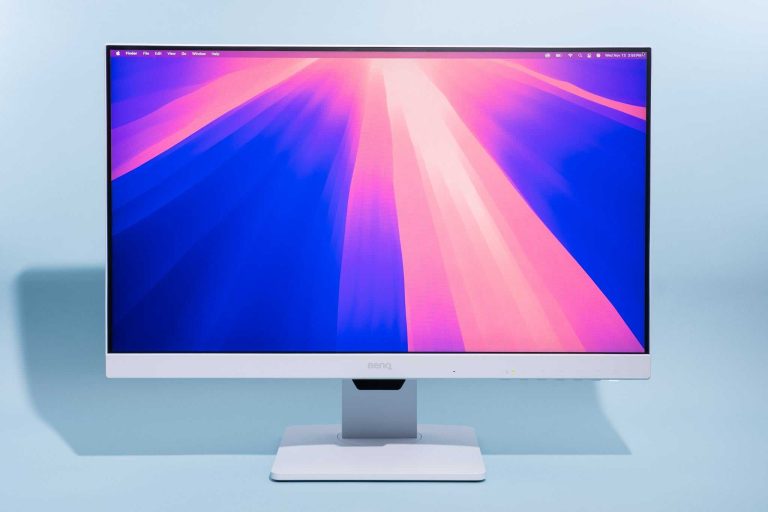Yes, a curved monitor can be excellent for streaming, offering an immersive viewing experience that makes your content come alive. It reduces glare and minimizes distortion around the edges, making extended viewing sessions more comfortable. Many streamers and viewers find that the curved design enhances engagement by wrapping the display around their field of vision. But is it really the best choice? In short, curved monitors are great for streaming if you want a more immersive and comfortable experience, especially for long sessions, but they might not be ideal for everyone depending on your space and preferences.
Curved monitors have gained popularity among streamers and entertainment enthusiasts because they create a sense of depth and involvement that flat screens can’t quite match. They’re especially useful for multi-monitor setups, providing a seamless transition between screens. However, they also come with some drawbacks, such as potential distortion for tasks that require precise straight lines or limited viewing angles for certain types of content. If you’re serious about immersive gaming or streaming, a curved monitor can significantly enhance your experience, but it’s worth considering your specific needs and workspace before making a decision.
Is a Curved Monitor Good for Streaming?
Understanding Curved Monitors and Their Design
A curved monitor is specially shaped to match the natural curve of the human eye. This design reduces distortions at the edges and offers a more immersive viewing experience. Many gamers and streamers choose curved screens because they feel more connected to what’s happening on the display.
Curved monitors come in various curvature levels, often measured in “radius” or “degrees.” For example, a 1800R curve is more pronounced than a 3000R, meaning the screen bends more sharply. The choice of curvature depends on personal preference and the intended use.
The main goal of a curved monitor is to enhance visual comfort and immersion during extended viewing sessions. This aspect can be especially beneficial for streaming, where clear visuals and comfortable long-term use matter a lot.
Are Curved Monitors Better for Streaming?
There is a common question among streamers: “Is a curved monitor good for streaming?” The answer depends on several factors, including viewing angles, the type of content streamed, and personal comfort.
Many streamers find that curved screens provide a wider field of view, which can help in multitasking. For example, they can easily keep chat windows or streaming software on the sides without losing focus on the main content. This increased efficiency makes streaming more comfortable.
However, some users might experience issues with certain types of content. For instance, flat monitors tend to distort less when displaying ultra-wide or multiple screens. Still, in most cases, the benefits of immersion outweigh these drawbacks during streaming.
Benefits of Using a Curved Monitor for Streaming
- Enhanced immersion: Curved displays make viewers feel more involved in the content. When you are streaming, this means a more engaging experience for your audience and yourself.
- Wide viewing angles: Curved monitors often have wider angle viewing, reducing color and contrast shifts when looking from different positions.
- Reduced glare and reflections: The curve helps in minimizing reflections from ambient lighting. This makes it easier to see details clearly, even in brightly lit rooms.
- Better focus: The natural shape helps your eyes concentrate on the center of the screen, decreasing eye strain during lengthy streaming sessions.
- Multitasking capabilities: Curved monitors with ultra-wide aspect ratios allow you to display multiple windows side by side seamlessly.
Potential Drawbacks of Curved Monitors for Streaming
While curved monitors have many upsides, they also come with some considerations.
One issue can be distortion at the edges, especially on ultra-wide screens. This might affect how some viewers perceive the streamed content if they are watching on flat displays.
Another challenge is placement and setup. Curved screens often need to be positioned precisely to avoid warping the image or creating awkward viewing angles. This means you’ll need to find the right desk setup for maximum comfort.
Finally, curved monitors tend to be more expensive than flat ones of similar size and resolution, which might impact your budget.
Choosing the Right Curved Monitor for Streaming
When selecting a monitor for streaming, several specifications matter. These include size, resolution, refresh rate, and curvature.
Size and Aspect Ratio
Choosing between a 24-inch, 27-inch, or larger screen depends on your space and preferences. Larger screens with ultra-wide ratios, such as 21:9 or 32:9, offer more real estate for multitasking and immersive viewing.
Resolution
For high-quality streaming, a resolution of at least 1080p (Full HD) is essential. If your budget allows, consider 1440p or 4K for sharper images and better detail, especially when streaming games or detailed content.
Refresh Rate and Response Time
A higher refresh rate, such as 75Hz or 144Hz, provides smoother visuals during fast-paced streams or gameplay. Lower response times, like 1ms or 4ms, reduce motion blur and ghosting effects.
Curvature Level
For a balance of immersion and practicality, a 1800R or 2300R curvature is popular. These levels offer an engaging experience without distorting the image too much.
Impact of Curvature on Streaming Quality
The curvature of a monitor influences how a stream looks from the viewer’s perspective. In most cases, curves do not distort video quality but can affect how viewers perceive the content.
Streamers should ensure their monitor has good color accuracy and low input lag to avoid visual artifacts. A curved display with high pixel density delivers crisp, clear images that look professional and engaging.
For viewers watching the stream, a curved monitor can make the content seem more vibrant and surrounding. However, if multiple viewers are watching on flat screens, the difference might be less noticeable.
How Curved Monitors Affect Viewer Experience
From the viewer’s side, the experience varies depending on the content and screen setup. Gamers and streamers often enjoy the deeper immersion that curved monitors promote.
Some viewers may find that curved screens help reduce “visual fatigue” when watching long streams. The encompassing display directs more attention inward, reducing distractions from the environment.
On the other hand, some viewers with flat screens may perceive curved content differently, especially if the stream displays unusual angles or wide fields of view. Proper camera angles and production quality can mitigate these issues.
Will a Curved Monitor Improve Your Streaming Setup?
While a curved monitor doesn’t automatically make your streams better, it can improve your overall workflow. It simplifies multitasking by giving you more screen real estate and easier access to chat, alerts, or streaming controls.
Moreover, the immersive experience can make your live streams more engaging, as your audience feels more connected to your broadcasts.
If you frequently handle multiple programs, a large curved display can streamline your work and reduce the need for multiple monitors.
In summary, a curved monitor offers many advantages for streamers, especially when it comes to comfort and multitasking. Its potential drawbacks are manageable with proper setup and choice of the right specifications. Considering your streaming needs, content type, and budget will help determine if a curved monitor is the best option to enhance your online broadcasts.
Frequently Asked Questions
How does a curved monitor affect viewing angles during streaming sessions?
A curved monitor offers a more natural viewing experience by reducing distortion at the edges of the screen. This design helps viewers see the entire display clearly from different angles, making long streaming or gaming sessions more comfortable. It minimizes the need to move your head excessively to see different parts of the screen, providing a more immersive experience.
Can a curved monitor help reduce glare and reflections while streaming?
Many curved monitors feature matte finishes and specialized coatings that help lessen glare and reflections from ambient lighting. This can be especially beneficial in bright rooms or environments with strong light sources, as it minimizes distractions and allows you to focus better on your content during streaming sessions.
How does screen curvature impact multitasking and workspace organization for streamers?
The curvature creates a more extensive field of view, allowing streamers to comfortably view multiple windows or applications without switching focus frequently. This setup enhances multitasking efficiency, enabling you to monitor chat, manage streaming software, and view content simultaneously with ease.
Is a curved monitor suitable for fast-paced streaming content, like gaming or live reactions?
Curved monitors often have high refresh rates and quick response times, making them well-suited for fast-paced activities. Their design helps reduce motion blur and ghosting, ensuring smooth visuals during rapid movements, which improves the overall viewing experience for gaming and real-time reactions during streams.
Does a curved monitor enhance the overall aesthetic and professional look of a streaming setup?
Yes, curved monitors can add a sleek and modern touch to your streaming station. The curved design creates a more immersive and visually appealing setup, making your workspace look more professional and engaging for viewers. It also helps in creating a cohesive environment for your streaming content.
Final Thoughts
A curved monitor enhances immersion and reduces eye strain, making long streaming sessions more comfortable. Its design pulls you into the action, providing a more engaging viewing experience.
For streaming, a curved screen offers a wider field of view, which can improve multitasking and overall enjoyment.
Is a curved monitor good for streaming? Yes, it can make your viewing more immersive and comfortable, especially during extended use.
I’m passionate about hardware, especially laptops, monitors, and home office gear. I share reviews and practical advice to help readers choose the right devices and get the best performance.




